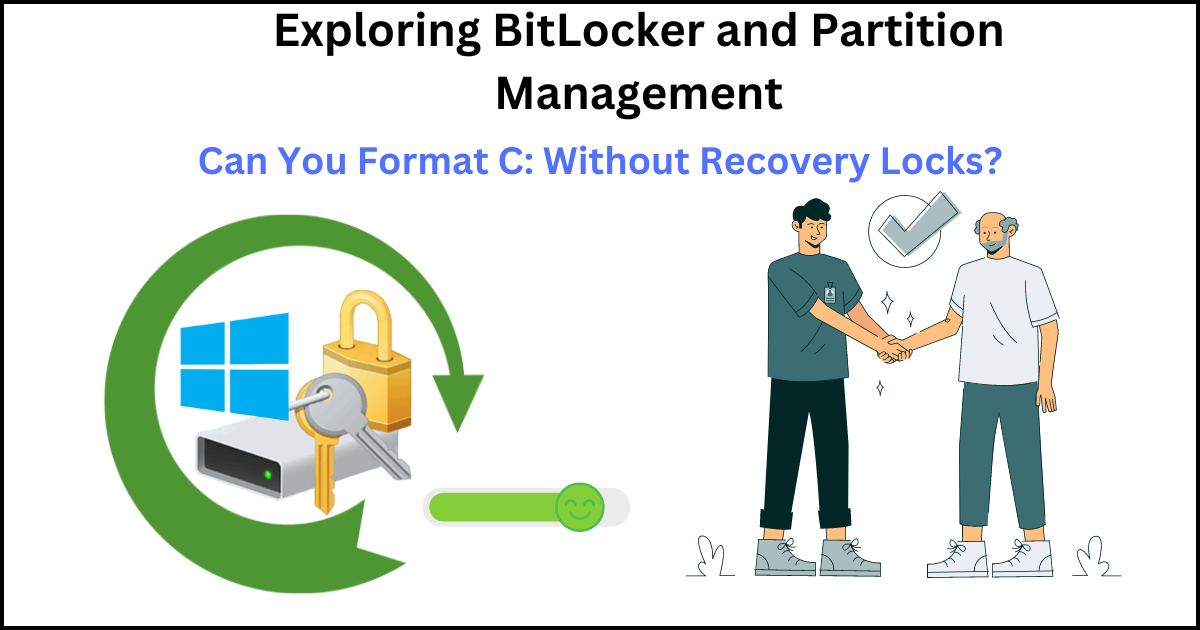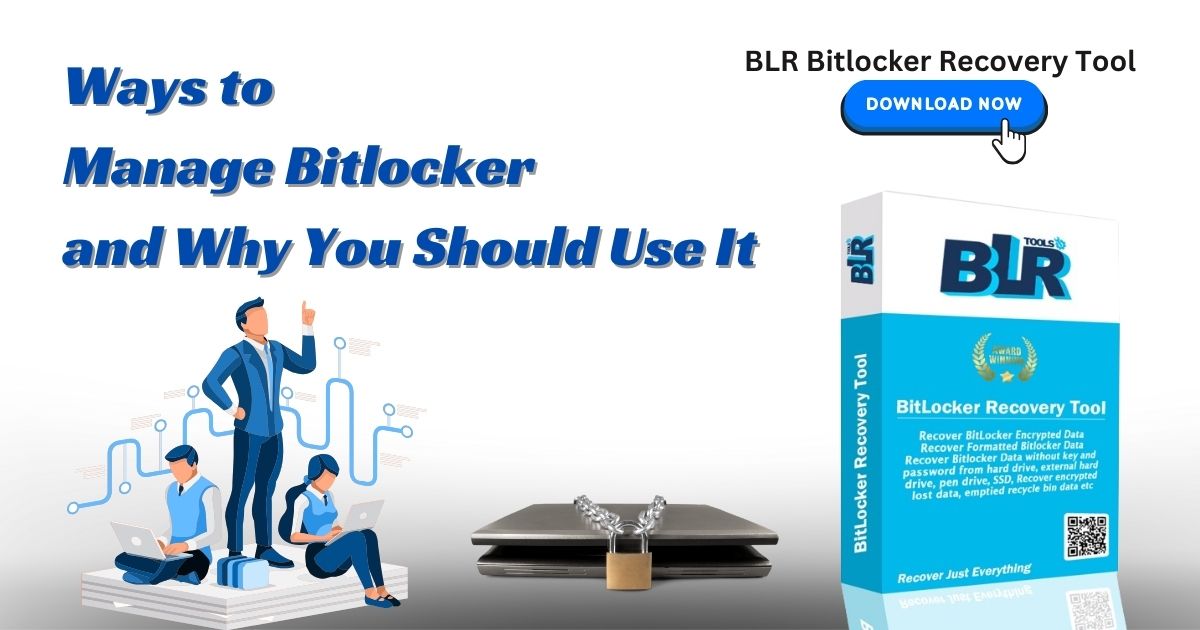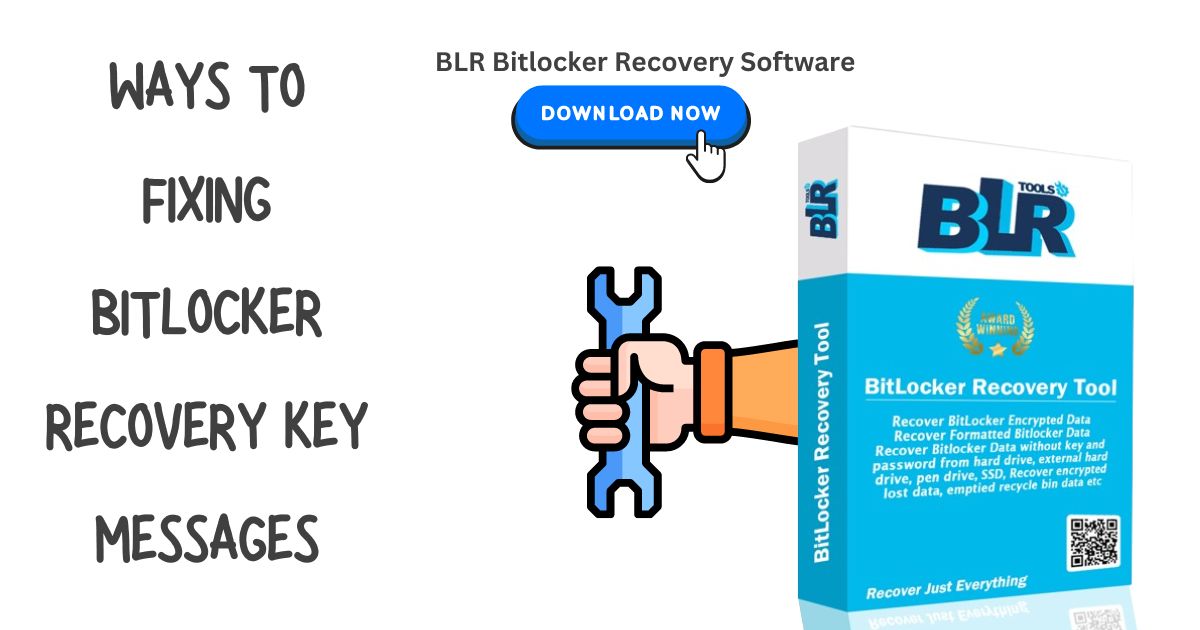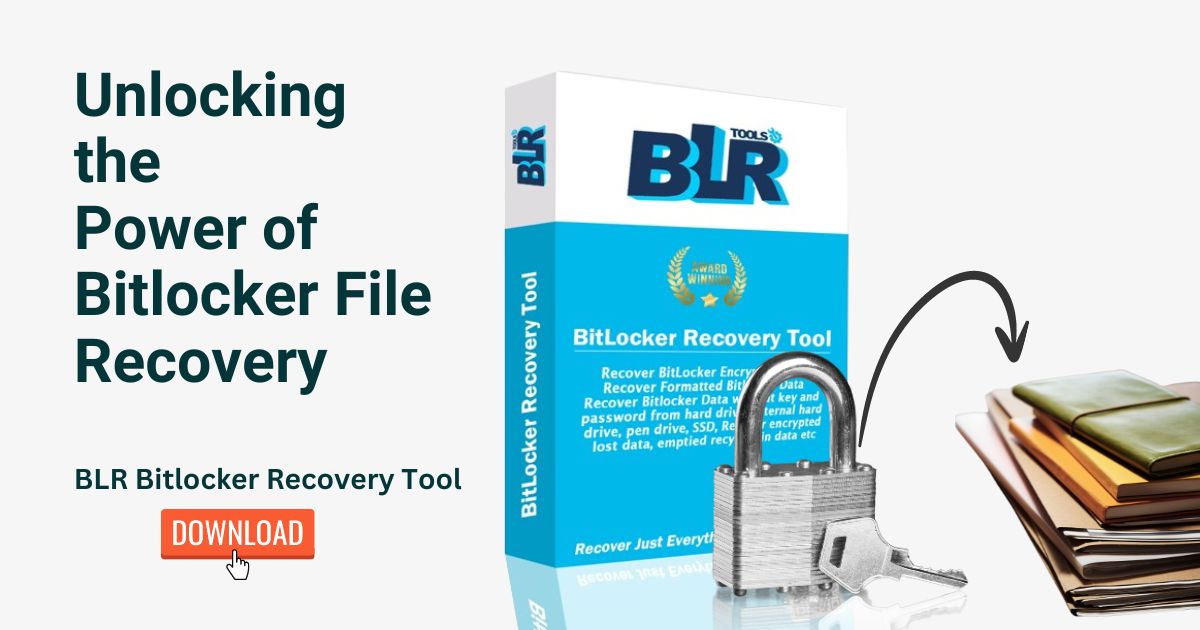“ Can I format my C: partition and create a new one without having any bitlocker recovery locked drive on it?”
Everyone knows that BitLocker drive encryption is a feature of Windows that prevents malevolent users from erasing, stealing, or copying your data. But is it possible to retrieve deleted data from BitLocker-encrypted drives? After saving their personal data to a hard disk, most people are concerned about how to protect it from being accessed, changed, or destroyed by unauthorized parties. Many of them will turn on BitLocker to safeguard hard drives that hold private data. Is there any bitlocker recovery tool to retrive data or bitlocker key generator tool.
Introduction
Strong data protection is provided by BitLocker encryption, particularly on Windows PCs. Nonetheless, BitLocker-protected drive management can occasionally be challenging, especially when partitions need to be formatted. In this blog, we delve into the question: Can you format your C: partition without encountering BitLocker recovery locked drive ? To discover the solution, let’s wrangle with the complexities of BitLocker encryption and partition management.
Being Aware BitLocker:
Let’s understand the fundamentals of BitLocker encryption before moving on to the formatting of partitions. BitLocker is an integrated encryption era utilized in Windows running structures that encrypts entire disk volumes to improve protection. It ensures that even if a person gains unauthorized get entry to on your computer or gets rid of the tough drive, they might not be capable of get entry to your information without the encryption key.
BitLocker creates a secure environment that encrypts and protects data stored on a Bitlocker recovery locked drive. Each BitLocker-protected drive is associated with a recovery key, which is essential for unlocking the drive in the event that the password is forgotten or the system encounters difficulties during the launching process.
The Challenge of Formatting C: Partition:
The C: partition, also known as the system partition, is where the Windows operating system files are located. Formatting this partition involves wiping out all existing data, including the operating system itself. Consequently, formatting the C: partition is a significant operation that requires careful consideration and planning.
When you enable BitLocker on the C: partition, it adds an additional layer of complexity to the formatting process. BitLocker protects the partition by encrypting its contents, and managing the encryption keys properly is crucial to avoid data loss or access issues.
The Role of BitLocker Recovery Keys:
The recovery key’s one of the crucial components of BitLocker encryption. As a backup, the recovery key may be used to free up the encrypted pressure in the occasion that you neglect your password or experience troubles with the machine boot procedure. It’s vital to maintain the healing key secure and handy, as dropping it could result in facts loss or even whole drive lockout.
When you permit BitLocker on a power, Windows activates you to store or print the restoration key. It’s really helpful to keep multiple copies of the healing key in safe and handy locations to make sure you can constantly liberate the power whilst wished.
Formatting C: Partition and BitLocker Recovery Locks:
Now, let’s address the core question: Can you format the C: partition without encountering BitLocker recovery locked drive ? The answer lies in understanding how BitLocker encryption works and how it interacts with the partitioning process.
When you format the C: partition, you essentially wipe out all existing data, including the BitLocker encryption metadata. As a result, any recovery locks associated with the partition are also removed during the formatting process.
However, there are a few key points to keep in mind:
Backup Recovery Keys: Before formatting the C: partition, ensure that you have backed up the BitLocker recovery key. This is crucial because formatting the partition will result in the loss of all data, including the recovery keys stored on the drive.
Disable BitLocker: Disable BitLocker encryption on the C: partition before formatting it. This ensures that BitLocker does not lock the partition during the formatting process, which could potentially lead to data loss or access issues.
Verify Recovery Keys: After formatting the C: partition and reinstalling the operating system, it’s essential to verify that you can still access the BitLocker-protected drives using the recovery keys. This ensures that you can unlock the drives and access your data without any issues.
Best Practices for Managing BitLocker and Partitions:
To ensure a smooth and secure partition management process, here are some best practices to follow:
Regular Backup: Always backup your data and BitLocker recovery keys regularly to prevent data loss in case of unexpected events or system failures.
Disable BitLocker Before Partitioning: Before performing any partitioning or formatting operations, disable BitLocker encryption on the affected drives to avoid complications and ensure data integrity.
Store Recovery Keys Securely: Keep multiple copies of your BitLocker recovery keys in secure locations, such as encrypted drives or password-protected storage devices, to ensure you can always access them when needed.
Test Recovery Process: Periodically test the BitLocker recovery tool process to ensure that you can successfully unlock and access your encrypted drives using the recovery keys.
Conclusion:
In conclusion, formatting the C: partition without encountering BitLocker recovery locked drive is possible by following the right procedures and precautions. Understanding how BitLocker encryption works and its interaction with partition management is key to ensuring a smooth and secure process. By backing up recovery keys, disabling BitLocker before partitioning, and following best practices for managing encrypted drives, you can safely format partitions without compromising data security. Always don’t forget to exercise warning and double-take a look at your backups before performing any essential operations to your system.
Also Read:- Formatted Your BitLocker Drive? Here’s How to Retrieve Your Data
FAQ (Frequently Asked Question)
1. Is it possible to format the C: partition without encountering BitLocker recovery locks?
Yes, it is possible to format the C: partition without encountering BitLocker data recovery locks. When you format the C: partition, you essentially wipe out all existing data, including the BitLocker encryption metadata. As a result, the formatting process also removes any recovery locks associated with the partition.
2. What precautions should I take before formatting the C: partition?
Before formatting the C: partition, it is essential to take the following precautions:
- Backup your data: Ensure that you have backed up all important data stored on the C: partition to prevent data loss during the formatting process.
- Backup recovery keys: Make sure you have backed up the BitLocker recovery keys associated with the C: partition. These keys are crucial for unlocking the drive after formatting.
- Disable BitLocker: Before formatting the C: partition, ensure you disable BitLocker encryption to prevent locking the partition during the process.
3. How do I disable BitLocker encryption on the C: partition?
To disable BitLocker encryption on the C: partition, follow these steps:
- Open the Control Panel and navigate to “System and Security” > “BitLocker Drive Encryption.”
- Locate the C: partition in the list of drives and click on “Turn off BitLocker” next to it.
- Follow the on-screen instructions to disable BitLocker encryption on the C: partition.
4. What should I do after formatting the C: partition?
After formatting the C: partition, follow these steps:
- Reinstall the operating system: You will need to reinstall the Windows operating system on the formatted partition.
- Verify recovery keys: Ensure that you can still access the BitLocker-protected drive using the recovery keys after reinstalling the operating system.
5. Are there any risks associated with formatting the C: partition?
Formatting the C: partition involves wiping out all existing data, including the operating system itself. Therefore, it is essential to ensure that you have backed up all important data and bitlocker recovery keys before proceeding with the formatting process to prevent data loss.
6. Can I re-enable BitLocker encryption after formatting the C: partition?
Yes, you can re-enable BitLocker encryption on the C: partition after formatting it. However, it is crucial to back up the recovery keys again and follow the necessary precautions to ensure the security of your data.
7. What are the best practices for managing BitLocker-protected partitions?
Some best practices for managing BitLocker-protected partitions include:
- Regularly backup data and recovery keys.
- Disable BitLocker before performing partitioning or formatting operations.
- Store recovery keys securely in multiple locations.
- Test the BitLocker data recovery process periodically to ensure its effectiveness.





